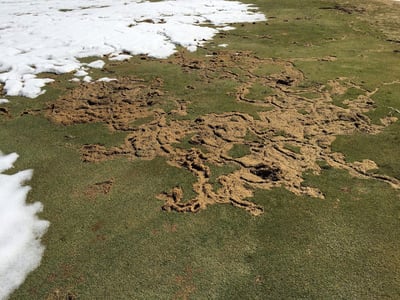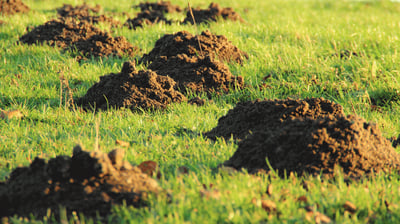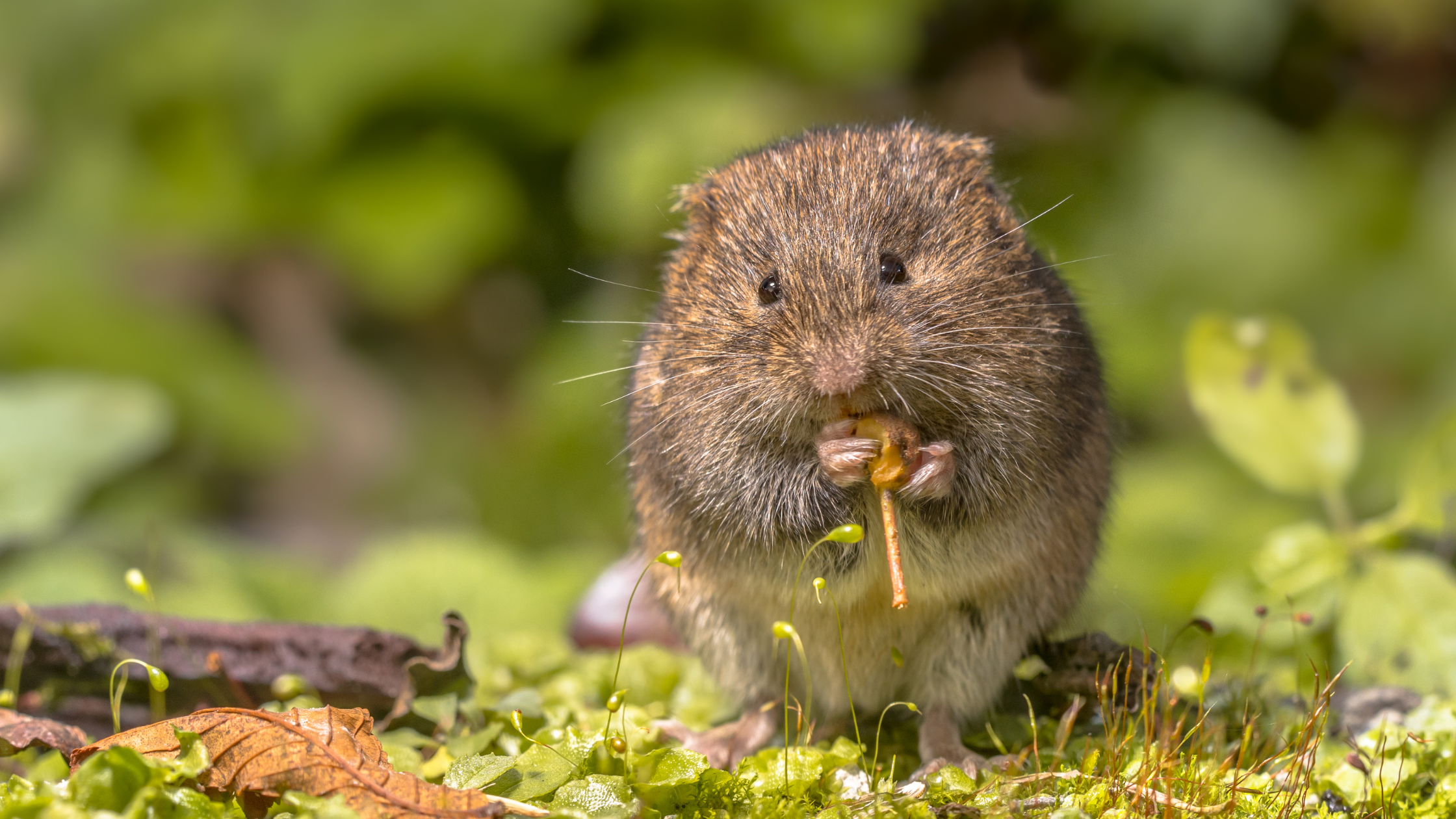A common misconception is confusing vole and mole damage on your lawn. This is because they both become most noticeable when snow cover melts in the spring and you get a good look at your lawn for the first time since fall. The most important thing to remember when dealing with mole or vole damage is that the remedies are relatively similar and easy to do.
Control Options for Voles & Moles
If you are looking to control the rodents themselves, we recommend baits or traps (you can find them online or your local hardware store) or hiring a company that specializes in rodent control. If you live in the woods and are willing to be patient, you can also just sit back and wait for some wildlife to help out. Foxes, coyotes, and owls all will feed on moles and voles if given the opportunity.
Repairing Damaged Lawn
As you spot vole or mole damage in your turf, be sure to tamp down and seed any disturbed areas in your lawn as needed. In many cases, your lawn will recover on its own and may not even need seeding, but if the damage is severe–or you want to speed the process up–you can ask us about a spring slice seeding service. If this is something you’re considering, please don’t delay, as these services are often in high demand and so tend to book up quickly.
Voles
Vole damage presents as shallow snake-like tunnels about two inches wide that are visible all over your lawn (as seen below, right). These are the surface tunnels voles use all throughout the winter as they, like moles, do not hibernate. Voles feed on grass blades and stems and are known to have a fondness for seeds common in birdseed. If you have a bird feeder, you may notice a concentration of vole tunnels leading to and away from it! Voles themselves most closely resemble field mice in both size and shape and can be found burrowing in nests of dried grass and brush.

Vole tracks
Moles
Moles are subsurface burrowers, constructing networks of tunnels beneath the soil surface. You notice their tunnels in the spring because the upper layers of the soil thaw much faster providing better mobility and a richer feeding source. Digging so close to the surface pushes mounds of dirt up as they move along (as seen below, left). Every so often, moles punch mounds of dirt through the surface to make room for nesting cavities. It is important to tamp these down and spread out the dirt they have disturbed in order to let your grass recover. Once soil temperatures rise high enough, moles dig deeper into the soil and you might not see them again until next year. Learn more about spotting mole activity.

Mole mounds
Whether it’s moles or voles, the key thing to remember is to fix the damage as soon as you spot it. This gives your lawn the best chance of rebounding on its own as your grass wakes up from its winter dormancy. This also prevents bare patches from forming, which can allow weeds, such as crabgrass, to take hold.
